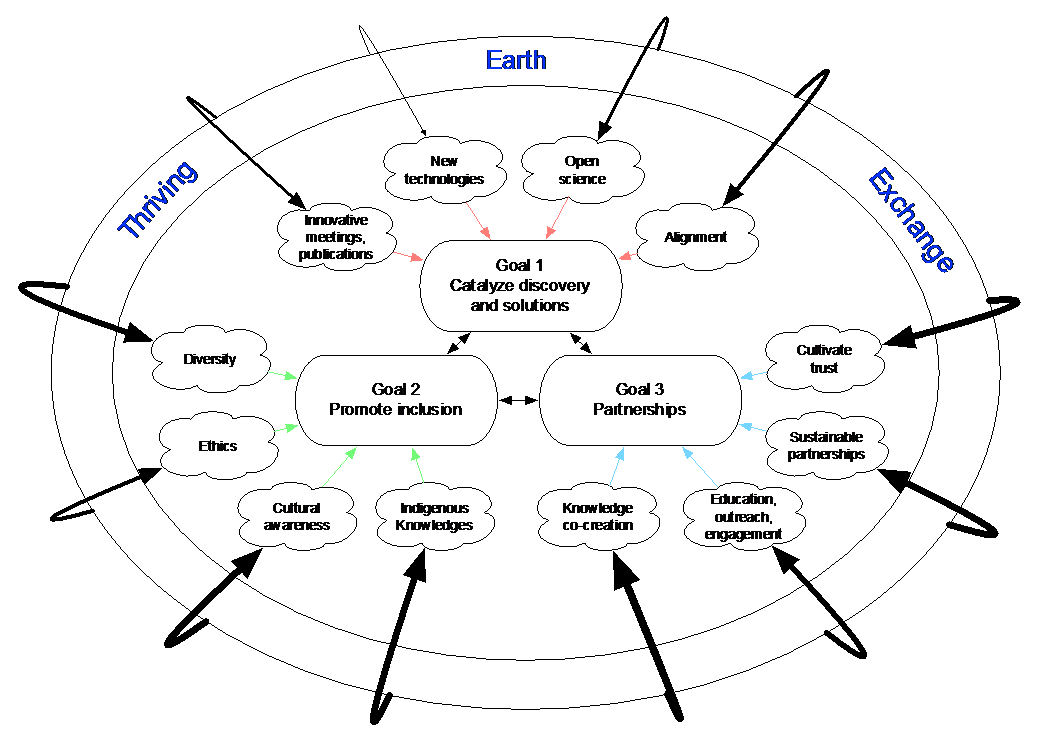
Janus; Illustration to the Latin edition of Sebastian Münster, ‘Cosmographia’, Basle: Heinrich Petri, 1552, The Trustees of the British Museum, CC BY-NC-SA 4.0
Learning Scientific Strategy from Improvisational Theater: The Power of “Yes, and…”
By Kevin Noone, Thriving Earth Exchange Advisory Board Chair
In Roman mythology, Janus was the god of transitions. He was well suited to the task, having one face oriented towards the past and one towards the future. I think Janus would be very proud of AGU’s new strategic plan. It skillfully taps into the century of tradition and expertise AGU has developed in support of discovery in Earth and space science, and courageously plots out a course for the future that would ensure that AGU’s science is relevant for 21st century challenges. Combining discovery and solutions, co-creating new knowledge through sustainable partnerships, promoting inclusion, building trust – all these elements of the plan resonate extremely well with the vision and mission of the Thriving Earth Exchange.
There are always challenging tensions to balance when devising a new strategic plan for a member-based scientific organization like AGU. There is the tension between respecting the traditional scientific philosophy and approaches that have made AGU the organization it now is and nurturing innovation for tomorrow’s challenges. There is the tension between supporting discovery science with the need to better link science and societal needs. The strategic plan wisely addresses these tensions with the powerful conjunction “and.” The first strategic goal is to “Catalyze discovery and solutions to scientific and societal challenges.” I get the impression that the AGU leadership perhaps took a crash course in improvisational theater, in which the “Yes, and…” technique is used to train actors to listen to each other as they create even better performances.
The Thriving Earth Exchange advisory board discussed the new strategic plan at a recent meeting. The board members’ enthusiasm and support for the plan were palpable. I and the other members were delighted (and a bit proud) to see the spirit and philosophy of Thriving Earth Exchange clearly reflected in it.

Image courtesy of Thriving Earth Exchange Advisory Board
The three goals in the strategic plan have strong linkages with the process of community science Thriving Earth Exchange has pioneered, and the advisory board discussed the extent to which we thought Thriving Earth Exchange could help AGU achieve them. We tried capturing the discussions in a diagram, in which the thickness of the arrows shows the degree to which we thought the experience and expertise of Thriving Earth Exchange participants could aid in achieving the goals of the strategic plan. Strong connections abound. In particular, Thriving Earth Exchange can help develop partnerships and promote inclusion. Community science is about creating respectful partnerships and relationships. Both the process and the results of community science will be of use to the broader organization in meeting AGU’s strategic goals.
The advisory board sees Thriving Earth Exchange as a pathfinder. Thriving Earth Exchange is small enough to be nimble and able to respond to unexpected opportunities, yet prominent enough, with more than 100 successful community science projects, to have gained attention, both inside and outside the scientific domain. We relish the opportunity to continue to scout the emerging landscape of science in the Anthropocene. We are delighted to be able to aid AGU in shaping new partnerships and relationships that focus on the powerful concept “and.” In doing so, we will strengthen the science AGU supports and increase the understanding of and support for Earth and space science. A sound strategic plan is now in place; let’s get started implementing it!
